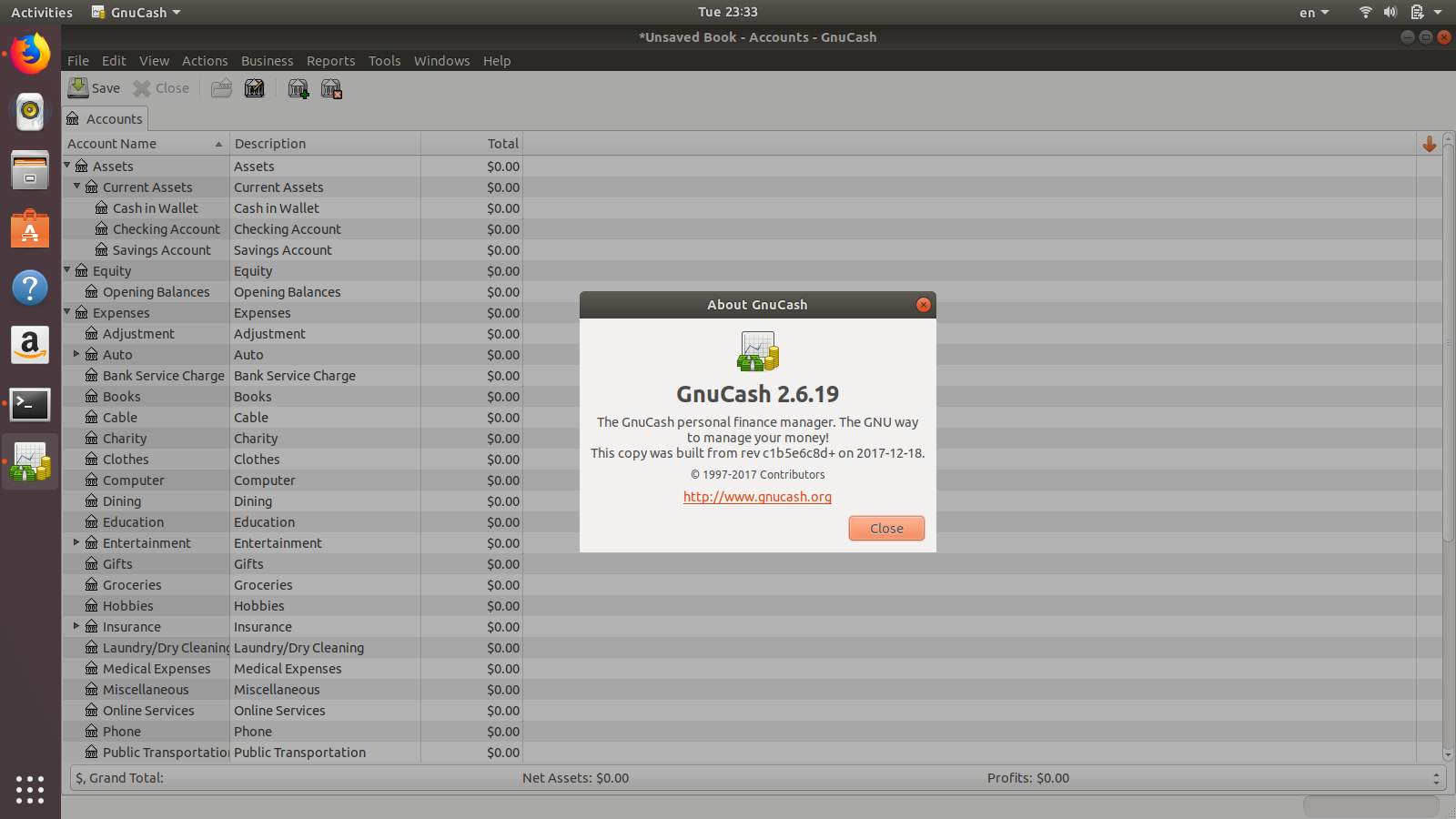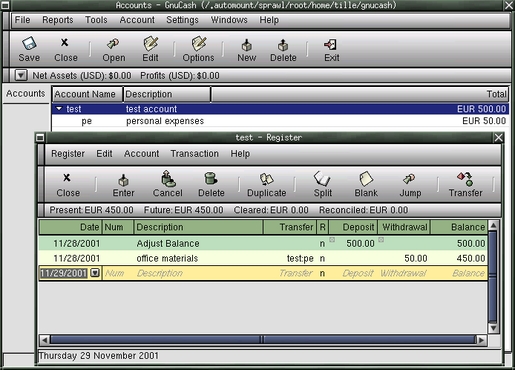

- #Gnucash nabble archives how to
- #Gnucash nabble archives install
- #Gnucash nabble archives update
- #Gnucash nabble archives portable
# an incon will then appears under System Tools
#Gnucash nabble archives install
To install it, just type:Īdd this software source: ppa:gezakovacs/ppa

On Ubuntu, there is a tool for converting. I would suggest in your /media directory: Before mounting you will need to create a mount point. Gmount-iso will show up in System Tools in your menu. Sudo mount filename.iso /media/cdrom0 -o loop With that file saved you are ready to reboot and start up VirtualBox with USB support. None /proc/bus/usb usbfs devgid=501,devmode=664 0 0 You have to get the user ID of the vboxusers group. Now it’s time to configure the system to allow USB support. # Change the name of the file with the command mvĭont install the Community OSE version, download straight from the website Rpm -ivh /root/rpmbuild/RPMS/noarch/ -nodeps Yum -y install rpm-build cabextract ttmkfdir # Set wicd to start automatically, this may not be necessary in Fedora 12 Yum install f-spot flash-plugin filezilla thunderbird gimp amule azureus skype xchat-gnome AdobeReader_enu gnucash scribus amarok audacity banshee mplayer mplayer-gui gtkpod xmms DVDRipOMatic dvdrip kino vlc mozilla-vlc xine k3b k3b-extras-freeworld k3b-common k3b-libs bluefish kdewebdev java compat-libstdc++-33 ffmpeg lame libXp mjpegtools wget VirtualBox-OSE gstreamer-* wget
#Gnucash nabble archives portable
If all goes well, you should now be booting into your own portable Live USB Fedora 9, 10 or 11. Once the process has finished, simply restart your PC and set your System BIOS or Boot Menu to boot from the USB flash drive Move the Persistent Overlay slider to set the capacity to use for the persistent imageĬlick Create Live USB to begin the creation processĪ nice progress bar will indicate the progress of your USB Fedora creation. Set the Target Device to point to your USB flash drive Select either to Use existing Live CD or Download Fedora

Navigate to the liveusb-creator folder and click liveusb-creator.exe to launch the toolĮven though the USB Fedora creation process is straight forward, here is a quick rundown of all the steps involved:
#Gnucash nabble archives how to
How to create a Fedora Flash Drive from Windows:ĭownload the Fedora liveusb-creator-x.x.zipĮxtract the liveusb-creator-zip to your PC Sudo apt-get -y -force-yes install gcc virtualbox-3.2 foo2zjs Sudo apt-get install debian-archive-keyring opera Manually add this repo: deb stable non-free Sudo apt-key adv -keyserver -recv-keys 0xd66b746eĮcho "deb stable non-free" | sudo tee -a /etc/apt/sources.list > /dev/null Sudo apt-get -y -force-yes install firefox numlockx unrar gimp cheese vlc seamonkey arora kompozer Sudo apt-get -y -force-yes install flashplugin-installer flashplugin-nonfree flashplugin-nonfree-extrasound ubuntu-restricted-extras Short-cut use Synaptic Package Manager to search for "sun java" and install sun-java6-bin, sun-java6-jre, sun-java6-fonts, and Sudo add-apt-repository ppa:sun-java-community-team/sun-java6 Optional: manually add username into vboxusers group Sudo apt-get -y -force-yes install virtualbox-4.1 Sudo apt-get -y -force-yes install gcc dkms Manually add this to software sources for Lubuntu 11.04: Sudo apt-get install tightvncserver xtightvncviewer tightvnc-javaĬreate a blank file on desktop | rightclick properties then enter this command:Ĭheck "no display", a file shall appear under:Ĭopy that file onto the desktop, then remove the original blank file LubuntuPreferences - software - sources - Other Software tab - check all except cdrom - Updates - check all - click close
#Gnucash nabble archives update
Gpg -export -armor 8505D44B | sudo apt-key add - & sudo apt-get update Sudo add-apt-repository ppa:glennric/dolphin-emu



 0 kommentar(er)
0 kommentar(er)
